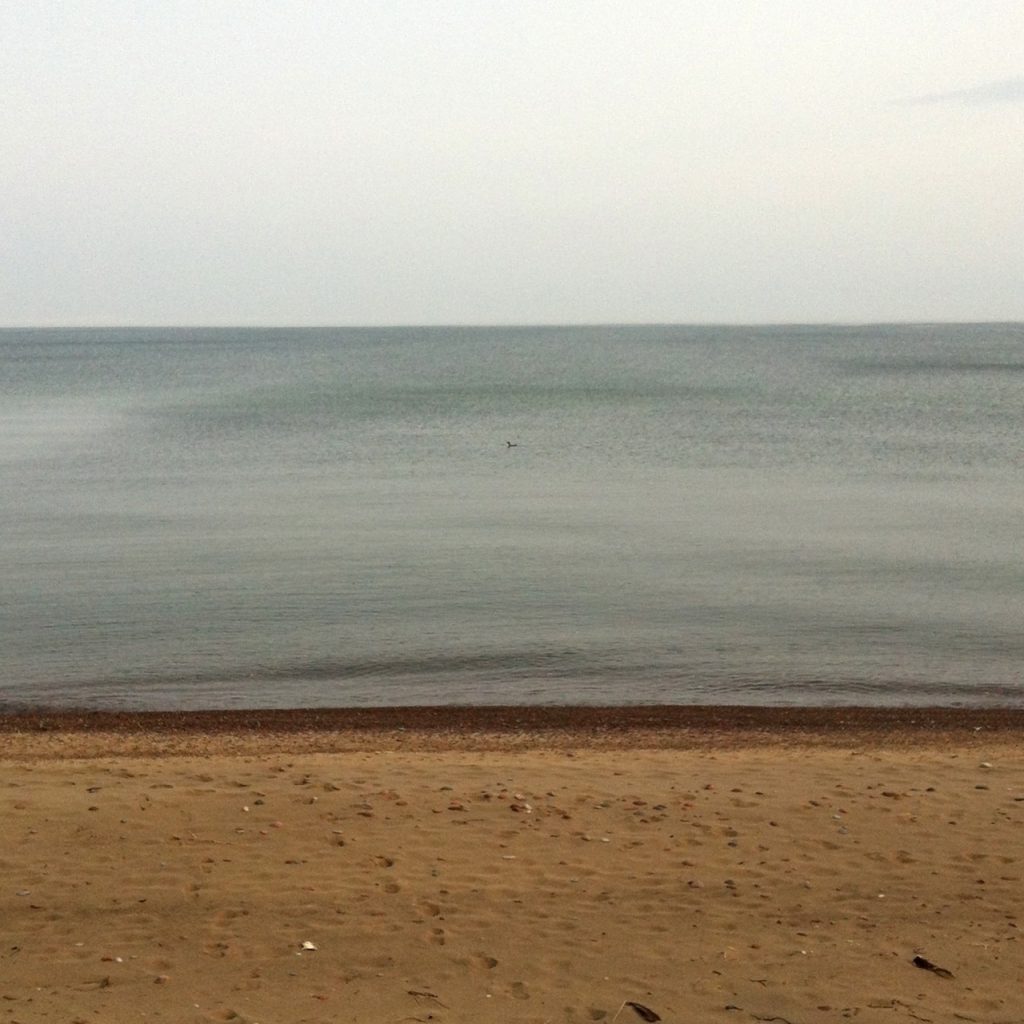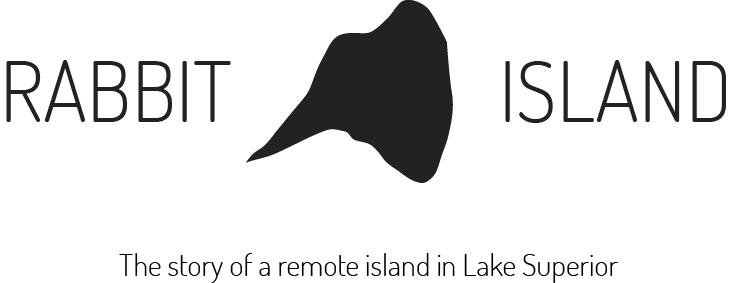June 17th, 2013. 10:25am
With the summer upon us, I thought I’d send you a brief update. About 10 days ago I stopped out at your island along with Nathan from the Keweenaw Land Trust. The Lake could not have been calmer, making for a smooth ride. We traversed the island, stopping at the heron rookery, which unfortunately showed no signs of nesting. Algal growth along the shore line is also more pronounced. We did find two little brown bats.
I wanted to confirm that it is still O.K. to pursue two of the projects we discussed last fall. First would be population genetics of the southern red-backed vole (Myodes gapperi). This would include Rabbit Island, the Keweenaw mainland, and possibly Manitou Island. We’ll send you a copy of the proposal. I’m currently at the meeting for the American Society of Mammalogists in Philadelphia and talking with colleagues about this. We would probably use microsatellites or single nucleotide polymorphisms (SNP array or “Snips”).
The second project would be establishing one, or preferably two, live trapping grids on the island. These grids would be trapped for one week, once a year in late summer or early fall and compared to a similar trap effort on the mainland. This would be a long-term effort, hopefully carried out for many years. I would propose placing one grid on the ridge in the area dominated by maples and one grid on the east-central part of the island—off the ridge—in an area with a notable balsam fir component.
Thanks for your input. Hopefully our paths will cross this summer.
Cheers,
John
10:34am
John,
All sounds excellent. Thanks for the update. There will be several illustrators, painters and photographers on the island this summer. Possible collaboration?
I have been worried the rookery has been on decline for a while now. The number of nests appears to be decreasing. Neighbors in Rabbit Bay and say they haven’t seen much “flyover" activity in the last several years. I speculate it might have something to do with the return of the eagles, though I can’t be certain.
The algae is also interesting. We’ve definitely been noticing an uptick every year except the first. I assumed it was due to water temperatures, which were at record highs for the past two summers, but again, there is uncertainty here. Any insight?
Best,
Rob
10:41am
Lucy, here are a few details from John’s recent visit to this island. He’ll be studying small mammal genetics this summer.
Please pass this on to Eva as an FYI. Possible collaboration?
- Rob
11:52am
Rob,
Thanks for the support and very prompt reply. Most of our scientific graphs are data generated and are generally clean and to the point, using software available in our labs. That said, I’m not very good at bridging the gap between the sciences and the arts. I’ve cc’d one of my colleagues, Deborah James, in communications, with experience in this area. She recently procured a small grant to initiate a media-based effort. We’ll send you a copy of the proposal. Because I’m in Philadelphia and Debbi is in London, it may be a week or so before sending you a copy.
As for the increase in shoreline algae, my direct response is that I don’t know. Although global warming is a possible contributor, it is an easy fall-back explanation. I have not seen extensive development of filamentous algae in rocky areas along the mainland; this probably warrants more careful observation. I’ve cc’d another colleague, Tim Gsell, who is a microbiologist. Field samples and plating for E. coli or other fecal coliform bacteria might be a starting point, but I would bow to Tim’s decision on the best initial approach.
John
June 20th, 2013. 12:30pm
Rob,
This is Tim, the microbiologist John mentioned in the last message. I like the idea looking at the various microbial populations from these sites to get a baseline, with future test dates allowing for identifying changes in these microbes numbers and diversity. It would be relatively easy to do some water monitoring for total bacteria, E. coli and fungi, etc., via the petrifilm platform. We potentially can complete some chemical analysis as well.
Tim
June 27th, 2013, 915pm
Hi Rob and John,
As discussed below, I am sending along the approved grant proposal for my cross discipline undergraduate research course. While it is visual media focused (and, I truly hope an outcome is to engage more people outdoors), my long-term interest in this project is to produce both media art and research (manuscript for publication) outcomes. Working between the social sciences and media arts, I produce both of these outcomes in my research work. I am open and enthusiastic to explore cross discipline collaborations. This includes working with video + quantitative/qualitative data. Exploring ways to visualize this data that may provide an opportunity for crossing the arts and sciences.
In terms of the project I am working towards, it would be ideal to visualize scientific research using live video feed along with the visualization of additional relevant data to map rich and live data to an existing area of study. In the future, we might consider using Wii gaming technology to trace the gestures of animals/movement in the wild (more on this later). With a graphic design and multimedia background, I believe this is an opportunity. To give you an idea of how I am thinking, here is a link to project by Richard Saul Wurman: The Urbanization of Planet Earth.
Regards,
Debbie
That would be the best combo I can think of. The next best thing relates to having a better anchor point, which basically means more weight on your iron rims.

Andrew arrived in the Copper Country and will be landing on the island later this afternoon to open up camp for the summer. He’ll be posting images and video from the island on our new Instagram account.
Here are some photos of the Rabbit Island Benefit on June 1st in Brooklyn. It was a huge success! Over 100 people attended and we raised over $4,000. Thank you to everyone who showed their support for art + conservation!
In the near future we’ll rundown our use of benefit proceeds conceptually and mathematically, post more photos, and start building the opportunity to purchase island artwork to fund future conservation projects on a platform kind of like if Kickstarter and the Nature Conservancy got married.
ps. Our first artist of the season arrives next week and our first biologist arrived last week to collect baseline data on island mammal habitat.
Creation and conservation deserve to be linked in principle. The rules of this game will likely be founded in wild spaces, such as Rabbit Island. Above are a portion of the works that will be shown and auctioned to benefit Art + Conservation, June 1st, in Brooklyn. Please join us.
1) Mike Perry. Painting. 24" x 24". 2012.
2) Christian De Vietri. Cast Bronze. 18" x ¾" diameter. 2012.
3) Ron Gorchov. Watercolor on Paper. 32" x 24". 2002.
4) Emilie Lee. Oil on board. 5" x 12". 2013.
5) Sarah Darnell. Colored pencil on Paper + rock from Rabbit Island. 2012.
6) Rob Gorski. Fabric. The original Rabbit Island Flag. 50" x 36". 2013.
7) Mary Rothlisberger. Reclaimed fabric. 18" x 18". 2012.
8) Miles Mattison. Painted drift wood from Rabbit Island. 2012.
9) Nicolas Lemery Nantel. Photograph. 18" x 18". 2013.
10) Isabella Martin. Photograph of RI performance. 5" x 7". 2012.
Work from the following artists will be auctioned at the Rabbit Island Benefit supporting our residency program, June 1st.
Ron Gorchov, Mike Perry, Liz Clark, Annie Varnot, Aaron Wexler, Lucy Engelman, Andrew Ranville, Miwa Koizumi, Archie Lee Coates IV, Ports Bishop, Emilie Lee, Peter Buchanan-Smith, Christian De Vietri, Nicole Lavelle, Charlotte X.C Sullivan, Miles Mattison, Sara Maynard, Yuko Oda, Jennifer Maravillas, Leif Parsons, Emily Fischer, Tolland Mansfield, Nicole Lavelle, Meg Whiteford, Marlin Ledin, Kelly Geary, Isabella Martin, Mary Rothlisberger, Hayley Severns, Sara Darnell, Emily Julka, Helen Lovelee and many more.
+ $25 tickets are available here and at the door.
+ Recent ARTINFO piece on the Rabbit Island Artist Residency
“The limited resources require visitors and artists-in-residence to carefully consider what to bring onto the island: everything from what to cook and tools for creation. Nothing can have a by-product that is going to mar the landscape, so it makes it an interesting place to contemplate one’s practice.”
This season’s first artist arrives on the island on June 22nd.
“Urban Americans are beginning to re-imagine and re-order the urban landscape, taking advantage of now-malleable understandings of urban space, design and even ownership.”
—Michael Carriere, *The Death and (After)Life of the American City; A Call to the Creators of the City,* Proximity Magazine Issue #6
I’m excited to be contributing to the development of a new project called the Detroit Conservancy, which will give an urban home to the ethos that drives Rabbit Island.
Starting with Rabbit Island’s existing plot of land, 1465 Pennsylvania Avenue in East Detroit, we envision creating a network of reclaimed residential and industrial lots bound together by the common vision of scalable conservation within an urban environment.
The prevailing approach to vacant land in Detroit is use, is to repurpose and rebuild. Houses, office buildings, parks, farms: all are viable possible uses for currently vacant land, but the Detoit Conservancy will add another option to that conversation.
Over time, the Conservancy will restore plots to their natural state through the reintroduction of native grasses and trees, plus soil clean-up and rehabilitation. Or maybe they will simply be allowed to undergo succession. These plots will slowly transform into their former selves. The Detroit Conservancy exhibits public preservation of open space in an effort to illuminate and critique dominant approaches to place-making within the post-subdivision landscape.
The Conservancy will connect purchased plots with neighborhood stewards in an effort to maintain cleanliness, safety, and a sense of presence within the land—factors often lacking in Detroit’s vacant spaces. The initial goal is for these rehabilitated spaces to provide neighborhoods with access to a slice of regional wilderness within a decidedly urban context. The long-term goal is to build a program of organized reclamation, stewardship and interpretation by bringing local and non-local artists to the plots for embedded residencies, where they can make work driven by the concept of conservation within an urban context and create projects and public programming to share with the neighborhood.
Artists will be offered access to time on Rabbit Island to further develop conversation between Michigan’s wild environment and Detroit’s tumultuous urbanity.
I’m excited about this project because it’s an interesting synthesis of seemingly opposing ethics—and while it’s a project mostly driven by ideas at this point, it has the potential to unfold into the most tangible thing that we as bodily beings can experience: land. You will be able to smell this project. You will be able to ride a bicycle to it, see it on a map, sit in it. It’s as simple as that.
On June 1, there will be a benefit art auction to support sending artists to Rabbit Island (75%) and to purchase plots in the upcoming city auction of land in Detroit (25%). If you live in New York, please go. And spend your money. You could help push forward the vision of the Detroit Conservancy.
- Nicole Lavelle, Artist, Portland, Oregon
